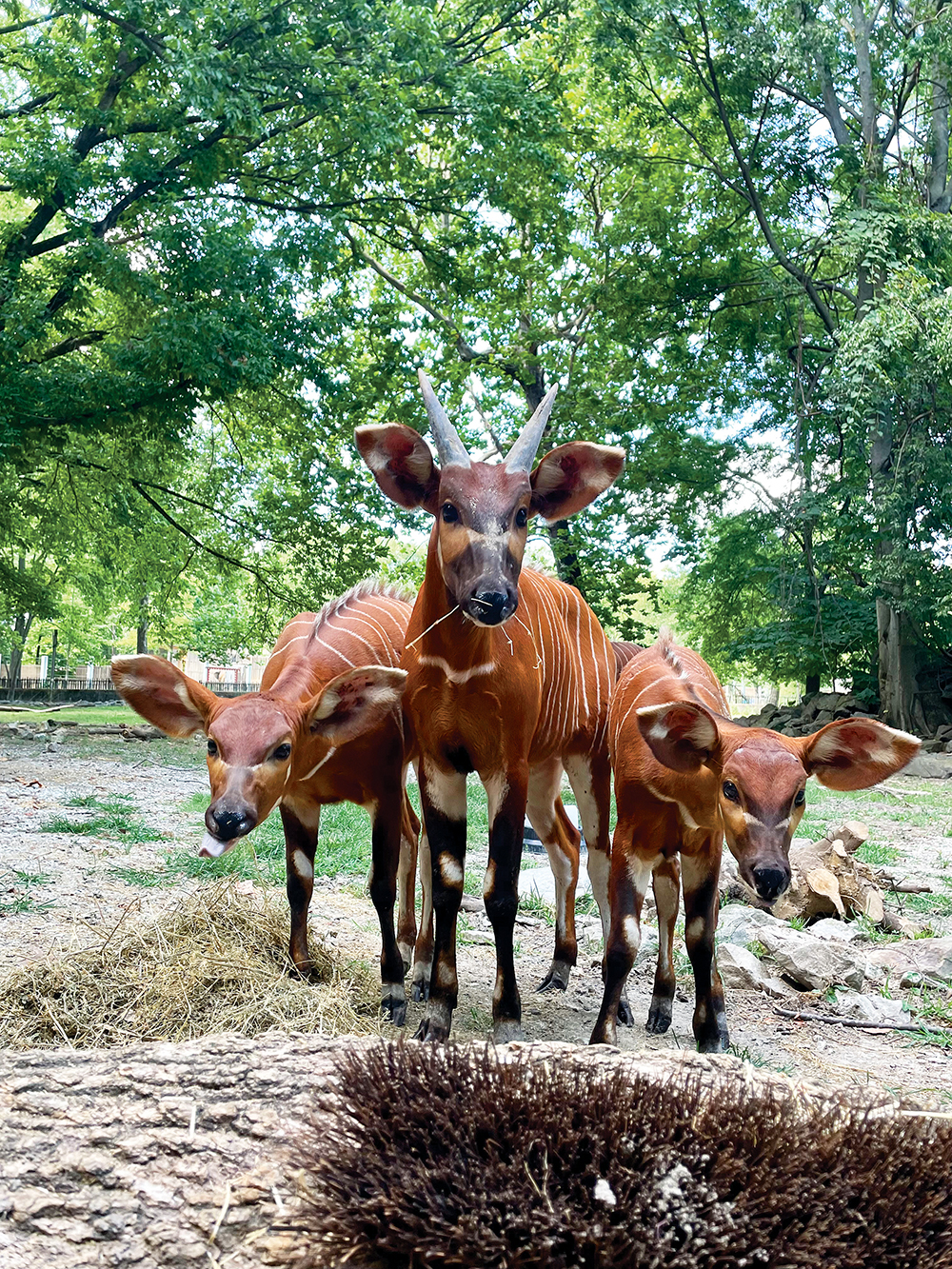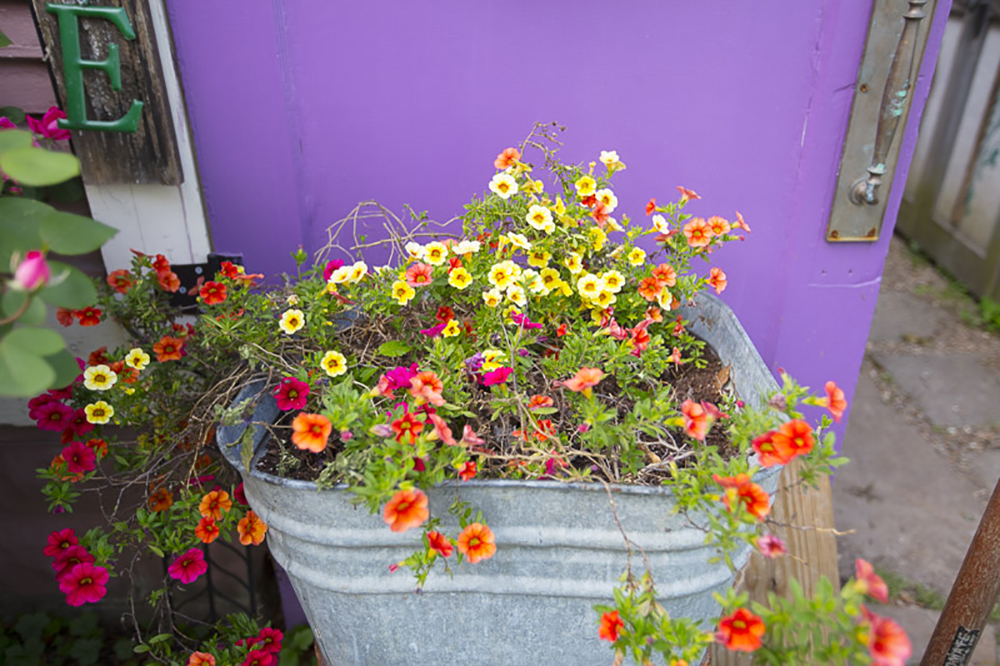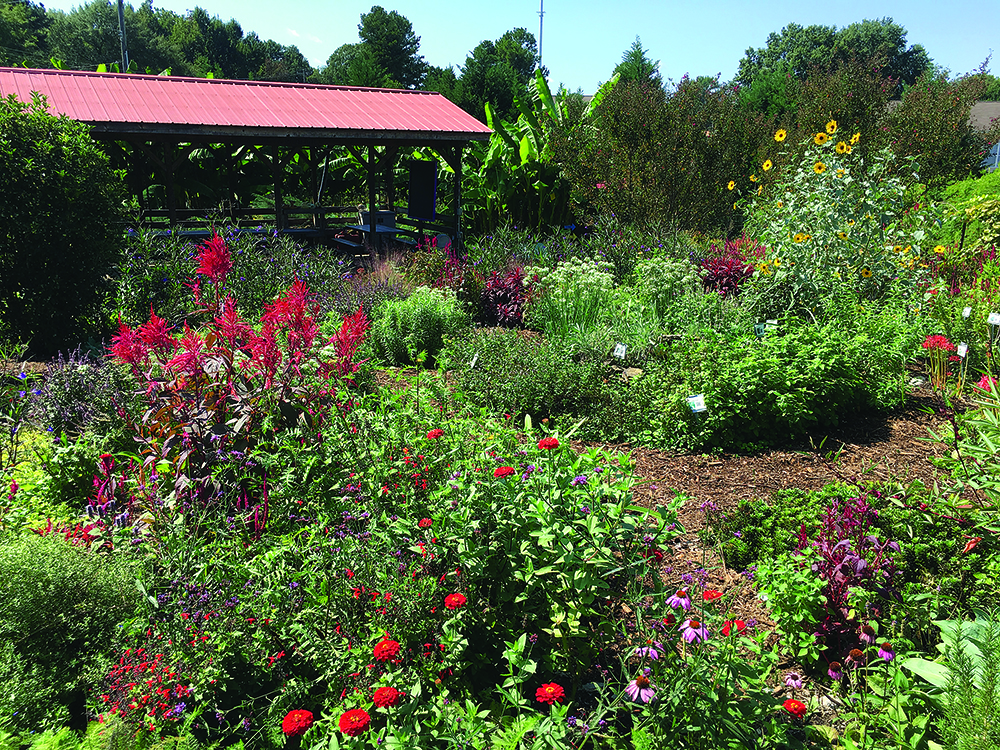It sure feels like summer! The hot, humid days have moved in with full force, but that doesn’t scare us. Yet as we all sit inside next to our struggling AC units, it’s easy to forget all the cool things going on in Memphis. The city attracted more than 11 million visitors last year, and for good reason: Memphis is a place people want to see. So get outside and re-familiarize yourself with all the great places and people that make Bluff City unique. Whether it’s restaurants, museums, or a night out on the town, there are plenty of reasons why here at home remains a great option for remaining summer plans.
Free Art and Museums
A staycation saves money, right? Save even more with these free attractions.
• The Dixon Gallery & Gardens is free through the end of 2024 with 2,000 objects in its collection and a glorious spread of botanic brilliance.
• The Memphis Brooks Museum of Art is free Saturdays from 10 a.m. to noon, and also for family-oriented Community Day events.
• The National Civil Rights Museum is free for Tennessee residents with state-issued ID Mondays from 3 p.m. until closing.
• The Stax Museum of American Soul Music is free for kids 6 and under. Shelby County residents with ID get in free on Tuesdays from 1 to 5 p.m. And it’s free for everyone from 1 to 5 p.m. on Family Day, the second Saturday of each month.

• The Memphis Zoo is free for wee ones under 2 years old. Tennessee residents get in free on Tuesdays from 2 p.m. to close.
• The Art Museum of the University of Memphis is always free.
• Access to the Metal Museum grounds, including its sculpture garden and gift shop, is always free.
• Walking and driving tours of Elmwood Cemetery are free, and it’s pretty quiet as well.
As always, you should check with the venues first before you go. And as you visit these places, you might be tempted to buy a membership. Go ahead. Find the level that works for you and enjoy it year-round.
— Jon W. Sparks
Hit the Town
A night at home curled up under a blanket to watch a movie or read a book is probably my ideal night. In fact, I’d say it’s so ideal that I do that practically every night, but, apparently, it’s good to shake things up a little every now and then. So this homebody did just that and dragged herself out of bed for a night out on the town. Sure, it was for a writing assignment, but I got out of the bed and that’s a start.
With a friend in tow, the night started at Bardog Tavern for dinner and drinks. I ordered something with rum that our server recommended — couldn’t really tell you what else was in it because I heard the word “rum” and that was enough for me. Turns out the name of the drink is James’ Cock, and I sucked it down like a Coca-Cola, so do with that what you will.
After that we headed to Blind Bear, a speakeasy I’d never heard about before, mostly because I rarely leave the house after 7 p.m. Then it was time for the Flying Saucer and, like, Beale and stuff. (I had a bit to drink at this point.) I think we headed to Paula & Raiford’s Disco after, waited in line for about 10 minutes, and then gave up and ordered a Lyft. But, yeah, it was nice to shake things up a bit for a bit of a “staycation,” but the best part was being able to fall asleep in my own bed. — Abigail Morici
Be a Tourist For a Day
More than 11 million people came to Memphis on vacation — on vacation! — last year. That’s roughly the population of Belgium. Why?! The crime! The heat! The potholes!
Daily Memphians might miss the mystique of the city’s cultural treasure trove that draws all those tourists each year. The Pyramid’s funny. Barbecue is routine. Beale is for tourists. Don’t get us started on Graceland.
But if you’re staycating this year, try (at least) vacating your house or your neighborhood. Go find out what makes Memphis a destination. Go reconnect with that everyday magic. Do it all while staying within your staycation budget, too.
Here’s a brief list of classic (and free!) tourist spots to hit for your Memphis staycation:
• Graceland — Brag that you’ve never been? Go. See what you think. Free walk-up admission to the Meditation Garden daily.
• Beale Street — Go for the people-watching. Stay for the music and a Big Ass Beer. Are your feet 10 feet off?
• Big River Crossing — A one-of-a-kind walk with Insta-worthy views of the river and the city. Free daily.
• Bass Pro Shops at the Pyramid — Fish pond, gator pit, and massive aquarium? Check. The place is a tourist magnet for a reason. Free daily. — Toby Sells
Be a Homebody
Staycate means staycate. No need to go figuring out car trips to some semi-distant place or to rush out to some favorite or fetchingly rumored juke joint in the evenings just because you’ve got some spare time.
Stay home. Sleep late. Alternatively, get up early in the morning when it’s still cool enough and take long walks on your property or in your neighborhood.
Give yourself at least one good substantial grocery visit. Then put it to use. Cook something new, for yourself or guests. And back in that fridge somewhere is an item you bought backaways with some purpose in mind you haven’t got to yet. Do it now before the food goes bad.
Fix up that spare room you’ve been using as a warehouse space. Change those worn-out bulbs. Take care of those overlooked potted plants. They’re thirstier than you are!

You bought those books. Now read them. Ditto with those magazines that are lying around. Forget about social media for a while. If you’ve got to turn on the computer, then use it to catch up on news you missed.
Look at yourself in the mirror and take inventory. I don’t need to tell you that you’ll see something that needs changing. Change it. Or at least start the process.
For a little while, everything is in your hands. Enjoy the fact. — Jackson Baker
The Memphis International Restaurant Tour
Eating out at a great restaurant is my favorite thing to do on a vacation.
Eating out at a great restaurant is also my favorite thing to do on a staycation.
You can experience other countries by staying home and visiting Memphis restaurants that specialize in various types of food from across the globe. Sort of “Around the World in 901 Days.” Maybe choose cuisine from a particular country each day of your staycation. Some places serve lunch, which usually is cheaper. And if you don’t know what to order at these places, ask your servers what they’d recommend. Here are some restaurant ideas:
• Tamboli’s Pasta & Pizza (Italian), 1761 Madison Avenue
• Pantà Memphis (Catalan), 2146 Monroe Avenue
• Mosa Asian Bistro (Asian fusion), 850 South White Station Road
• Las Tortugas (Mexican), 1215 South Germantown Road, and
Las Tortugas Deli Mexicana, 6300 Poplar Avenue No. 115
• El Sabor Latino (Colombian), 665 Avon Road
• India Palace (Indian), 1720 Poplar Avenue

• Bala’s Bistro (African), 4571 Elvis Presley Boulevard
• Casablanca Restaurant (Moroccan), 5030 Poplar Avenue No. 7 and
1707 Madison Avenue No. 103
• Sabor Caribe (Venezuelan), 662 Madison Avenue
• Tuyen’s Asian Bistro (Vietnamese), 288 North Cleveland Street
• Sakura Japanese Restaurant (Japanese), 4840 Poplar Avenue and 2060 West Street in Germantown
• Wang’s Mandarin House (Chinese), 6065 Park Avenue
Taking a trip around town to try exotic food is less expensive than airfare to exotic places. Not to mention lodging. You can go home to your own bed. And you don’t have to worry about passports.
— Michael Donahue
A Night at the Shell
There are a lot of places to see live music in Memphis: the Beale Street club packed with tourists, the Orpheum Theatre’s Gilded Age grandeur, the Green Room’s intimate sounds. But the best place in Memphis for a night of music is the Overton Park Shell.
Built in 1936 as a Works Progress Administration project designed to help workers during the Great Depression, it is one of a handful of band shells from that era still standing.

I was recently reminded of how lucky we are to have a place like the Shell when I saw PreauXX play there on July 1st. It was one of the super hot days we’ve been having this year, so I was expecting to be uncomfortable, at least until well after the sun had set. But the towering trees of Overton Park provided enough shade that a steady breeze made it quite pleasant, especially after a couple of days spent indoors hiding from the heat. We found a spot near the front of the stage and set up our camp chairs next to a young mom corralling her toddler.
My wife LJ stayed with the chairs as I checked out the food trucks, which were parked next to the new, greatly improved bar facilities.
We were chowing down on some barbecue tacos when PreauXX hit the stage, backed by his friends from the Unapologetic crew. The young mother was joined by her partner, and, after ignoring the music in favor of rolling on the lawn, the toddler threw his energy into dancing. (Really, it was more of a body-wide twitch, but he was trying his best.) When AWFM joined in for “Slide,” folks were streaming down the hill to do the title dance. This stage has hosted everyone from Elvis to Seun Kuti and Egypt 80, but for this night, PreauXX was the king. — Chris McCoy
Drag Shows at the Atomic Rose
Thanks to the phenomenon known as RuPaul’s Drag Race, we’re able to appreciate the art of drag without leaving our homes. And while watching hours of Snatch Game makes for the perfect staycation activity, so does supporting your local drag performers and artists.
Voted as the number-one best drag bar in the South by Time Out, Atomic Rose is the top destination for your staycation entertainment fix. The club recently went viral, at the height of Tennessee’s anti-drag controversy, when local drag queen and activist Bella DuBalle informed the audience of the severity of the bill and what it meant for the drag community. But the clip that circulated around TikTok only gave viewers a tidbit of the magic the nightclub possesses.

DuBalle is known as Slade Kyle outside of drag and says one of the things that makes the club so special is that it is a true melting pot, inclusive in multiple ways encompassing all genders, races, and sexuality. This diversity is showcased in one of their most iconic events known as the “War Of The Roses,” which Kyle describes as an eight-week drag competition, featuring a large and diverse pool of performers.
And if you happen to swing by after War season, the club also offers Friday and Saturday shows, as well as a drag brunch on Sunday. Friday and Saturday shows start at 10:30 p.m., and Sunday brunch service starts at 11 a.m., with the show starting at 12:30 p.m. — Kailynn Johnson
SPORTS!
We can never get enough Grizz action at the FedExForum. But they’re out of season (unless you’ve made the pilgrimage to the Las Vegas Summer League to watch Kenny Lofton Jr. hoop). Luckily, there’s another pleasant Downtown destination to get your fix of ’ball. AutoZone Park is home to the Redbirds and 901 FC, but it’s sometimes apparent that Memphians take the stadium for granted, evidenced by the quite noticeable number of empty seats during baseball and soccer games. It’s still hot outside, but an afternoon or night out at the ballpark is an excellent way to shake up a routine and try out a new experience in town.
Even if you’re not into sports all that much, there are plenty of additional perks that come tacked on to a game. A personal favorite of mine is an all-you-can-eat series at Redbirds games, which, for just a few extra bucks, gets you a pass into a roped-off section that provides drinks, snacks, hot dogs, and an endless supply of the featured entrée (anything from brisket, to nachos, to my personal favorite: hot wings).

Other enticements include specialty nights for $1 hot dogs or $2 beers. And when those nights line up, oh man. Kicking back with a few brews in what can either be a pleasant or a raucous atmosphere, depending on the matchup, is a reliable recipe for a fun night out. And if there’s a fireworks show afterward, well, all the better. Don’t sleep on it, Memphians! — Samuel X. Cicci
Tend Your Garden
If you time your work hours right and stay hydrated, summer gardening can be a breeze — and yield delicious rewards. Why else would the University of Tennessee’s Institute of Agriculture host its Summer Celebration of ag workshops and activities in Jackson only last week? The summer means heat to some, but for others it’s known as peak growing season. While that might sound dangerously like work, once your garden is up and running, tending it can be the perfect break from both screen time and chair time.
Early mornings can be sublime even in July, especially with an eyeful of blooms and fruits of the vine. It’s also a good time to water those roots before the blazing sun can bake the water droplets off the leaves. And yet, assuming you’ve done your homework and have a little mulched, irrigated, squirrel-protected paradise outside your door, there’s still more awaiting the horticultural staycationer: a world of garden clubs and nonprofits to liven up the typically solitary pursuit of the perfect bloom.

You don’t have to be a master of the pursuit to join the Memphis Area Master Gardeners, and it can be a great way to learn from expert volunteers who offer classes, working closely with the local UT extension service. There are also long-established neighborhood garden clubs, like the Cooper-Young Garden Club with their annual garden walk, and even community gardens if you prefer your plant-tending to be more sociable. Check out memphiscitybeautiful.org for a registry of every community garden in the city. — Alex Greene




